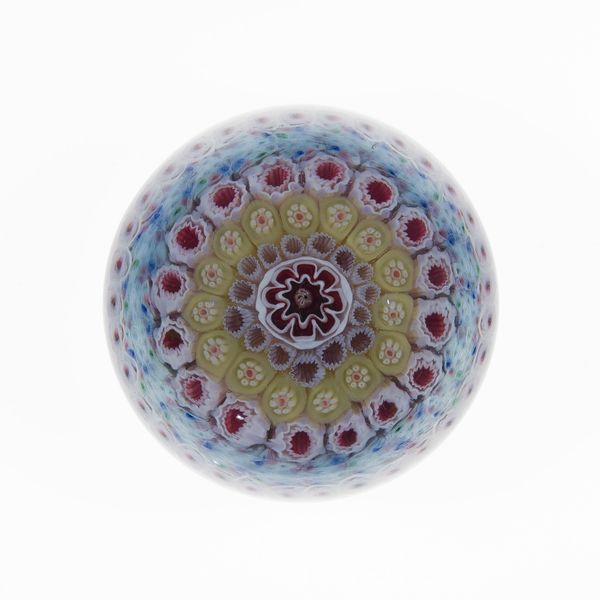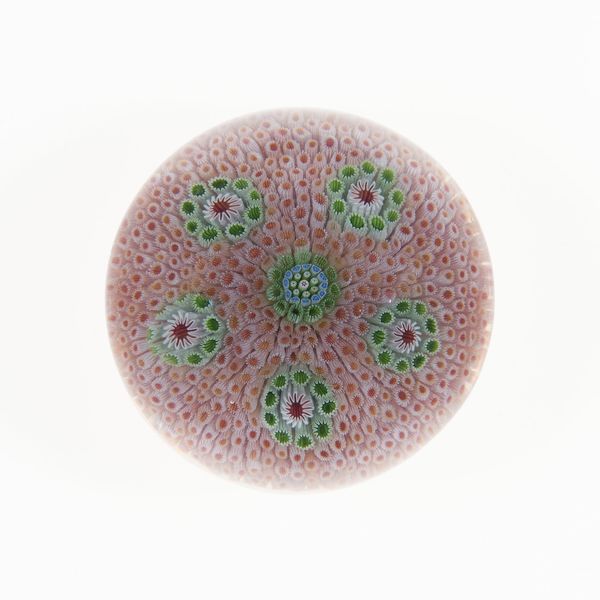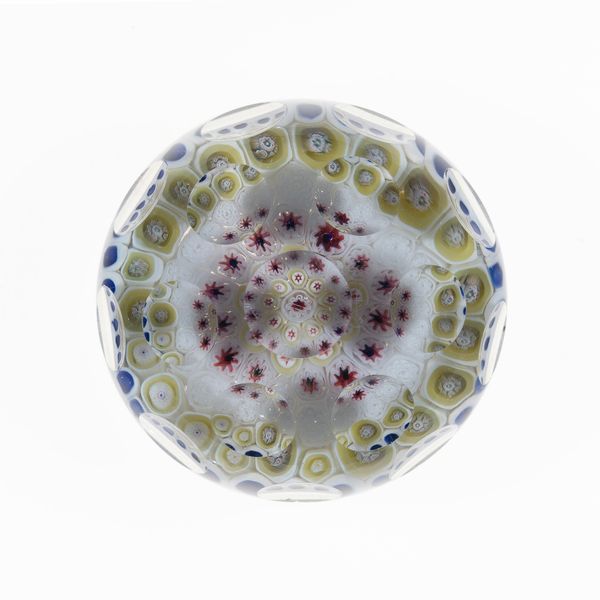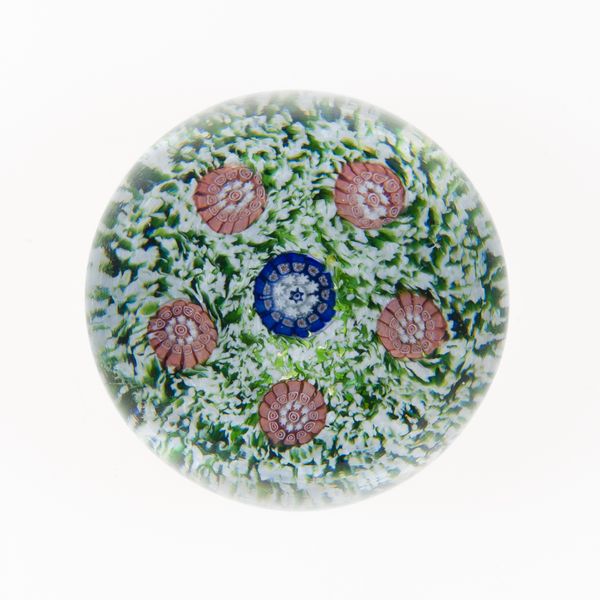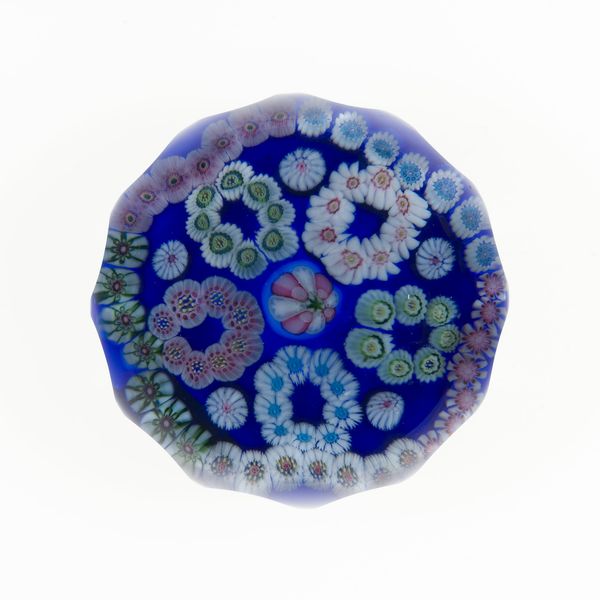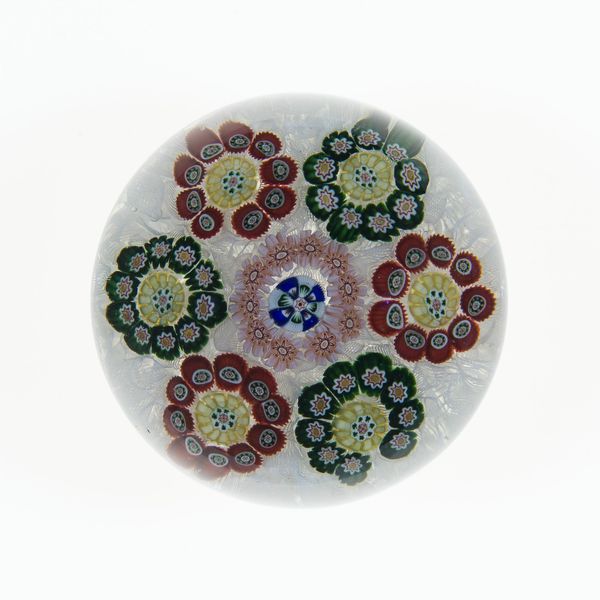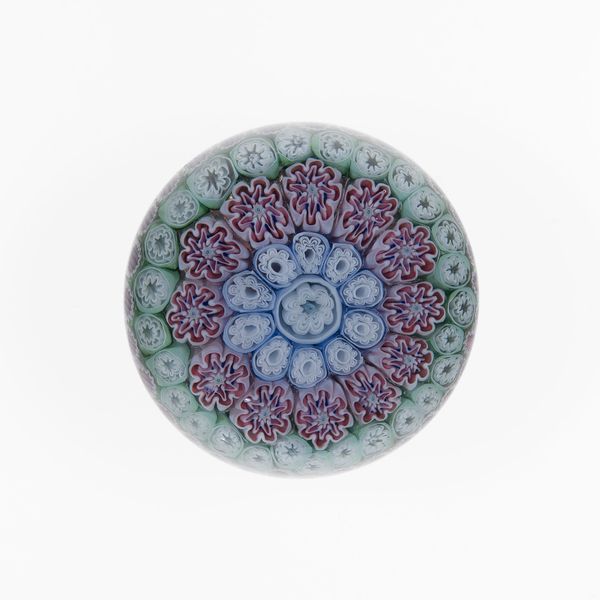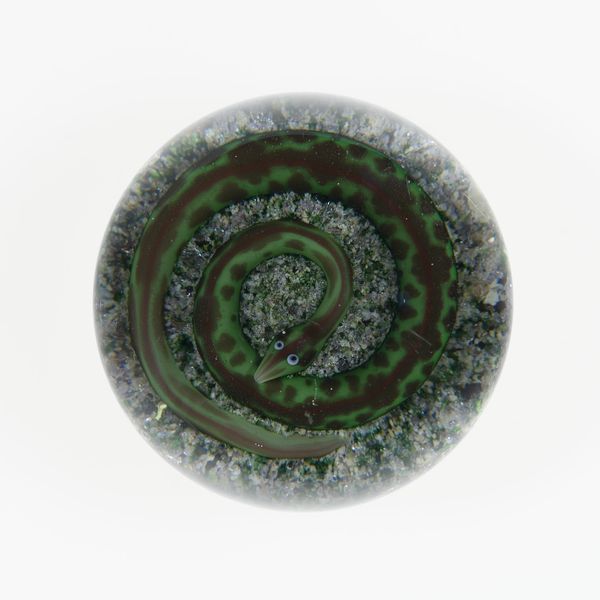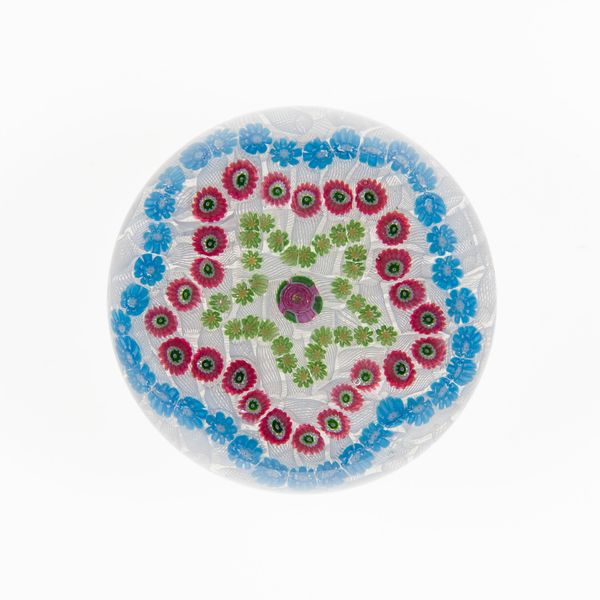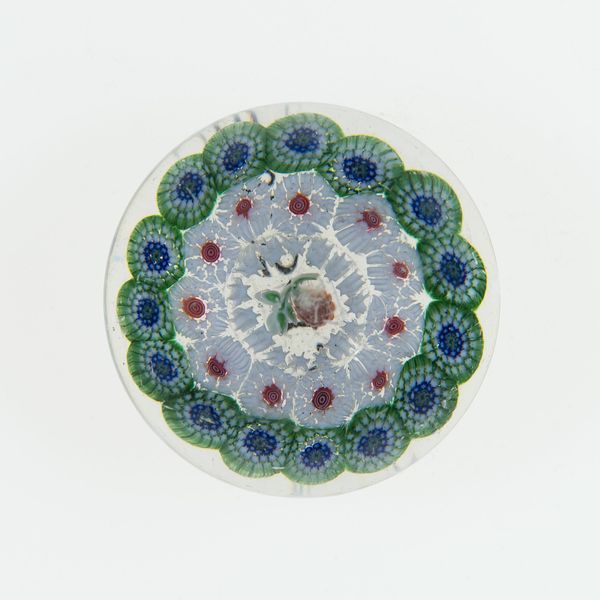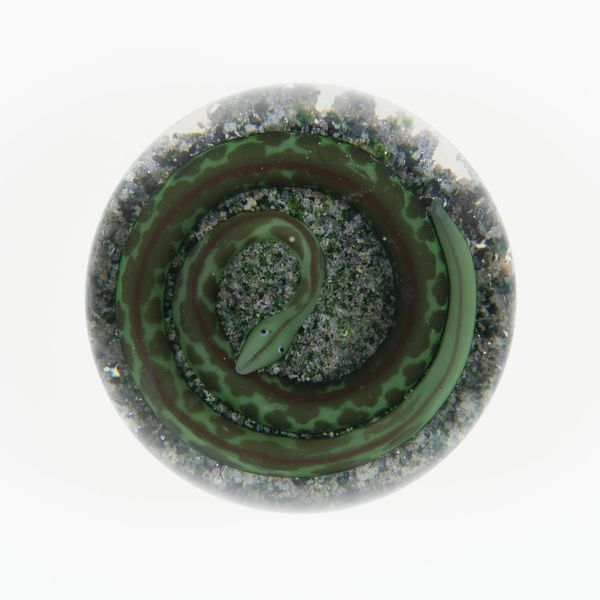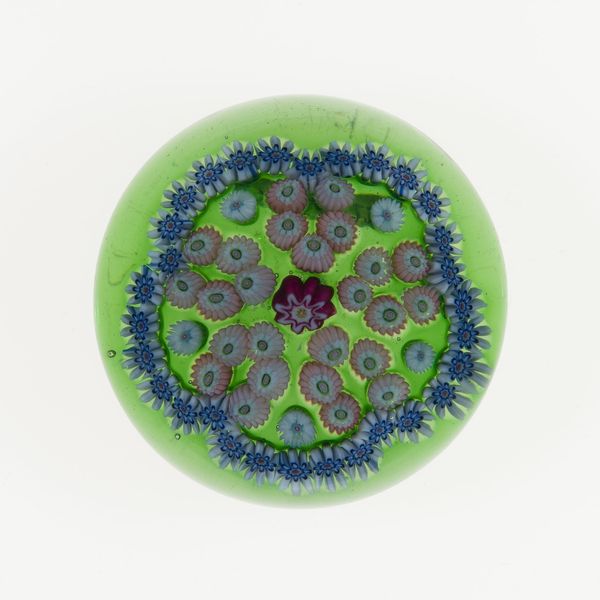
paper, glass
#
clear focal point
#
circular oval feature
#
egg art
#
3d printed part
#
swirl
#
round design
#
bright focal point
#
paper
#
glass
#
england
#
white focal point
#
round circular shape
#
nature closeup
Dimensions: Diam. 8.6 (3 3/8 in.)
Copyright: Public Domain
Editor: This beautiful object is called "Paperweight" and was created by George Bacchus & Sons around the late 19th century. It is made of glass and the artistry! It's mesmerizing. What can you tell me about this particular paperweight? Curator: Well, looking at it through a historical lens, these paperweights emerged during a time of rapid industrialization and growing consumer culture in England. They represent a fascinating intersection of art, industry, and social class. We see the intricate, almost scientific, arrangement of millefiori—those tiny glass elements—encased in clear glass. Editor: The millefiori are incredible. It almost looks like a miniature world. Curator: Exactly! And who was this "world" created for? Think about the burgeoning middle class in Victorian England. They desired beautiful, yet functional, objects to display in their homes as signifiers of taste and refinement. Consider how glassmaking firms like George Bacchus & Sons catered to this market, elevating functional objects into art pieces. Do you think these were affordable to most people? Editor: Probably not. I'm guessing it would've been pretty expensive. Curator: Right. The complex craftsmanship involved means these weren't mass-produced items for the working class. They became symbols of aspiration, of owning a small piece of art in a rapidly changing industrial landscape. It also reflects England's dominance in glass production at the time. The availability of high-quality glass was vital. Editor: So, it’s about more than just beauty, it reflects a certain kind of aspiration in society, which is amazing. I hadn't thought about the economic and social implications. Curator: Precisely. By studying an object like this paperweight, we gain insights into the cultural values, economic realities, and the interplay between art and industry in the late 19th century.
Comments
No comments
Be the first to comment and join the conversation on the ultimate creative platform.
